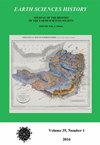基于卷积神经网络的超深层碳酸盐岩地震相识别
IF 0.6
4区 哲学
Q4 GEOSCIENCES, MULTIDISCIPLINARY
引用次数: 0
摘要
:地震相是由特定的地震反射特征定义的地震反射单元,即沉积相或地质体的地震反应,其准确性将直接影响油气勘探结果的可靠性。目前,一般是根据某些单道地震属性(波形、频谱、幅值等)与相邻单元的差异来识别地震相,进行聚类分析。然而,这种方法在识别具有连续波形的特殊反射结构时存在歧义本文章由计算机程序翻译,如有差异,请以英文原文为准。
Seismic Facies Recognition of Ultra-Deep Carbonate Rocks Based on Convolutional Neural Network
: Seismic facies is a seismic reflection unit defined by specific seismic reflection characteristics, that is, the seismic responses of sedimentary facies or geological bodies, whose accuracy will directly affect the reliability of oil and gas exploration results. Currently, seismic facies is generally recognized depending upon the differences between certain single trace seismic attributes (waveform, frequency spectrum, and amplitude, etc.) and adjacent units to conduct cluster analysis. Such methods, however, have ambiguity in identifying special reflective structures with continuous waveforms (e
求助全文
通过发布文献求助,成功后即可免费获取论文全文。
去求助
来源期刊

Earth Sciences History
GEOSCIENCES, MULTIDISCIPLINARY-HISTORY & PHILOSOPHY OF SCIENCE
CiteScore
1.00
自引率
0.00%
发文量
1
审稿时长
>12 weeks
期刊介绍:
Earth Sciences History promotes and publishes historical work on all areas of the earth sciences – including geology, geography, geophysics, oceanography, paleontology, meteorology, and climatology.
The journal honors and encourages a variety of approaches to historical study: biography, history of ideas, social history, and histories of institutions, organizations, and techniques.
Articles are peer reviewed.
 求助内容:
求助内容: 应助结果提醒方式:
应助结果提醒方式:


